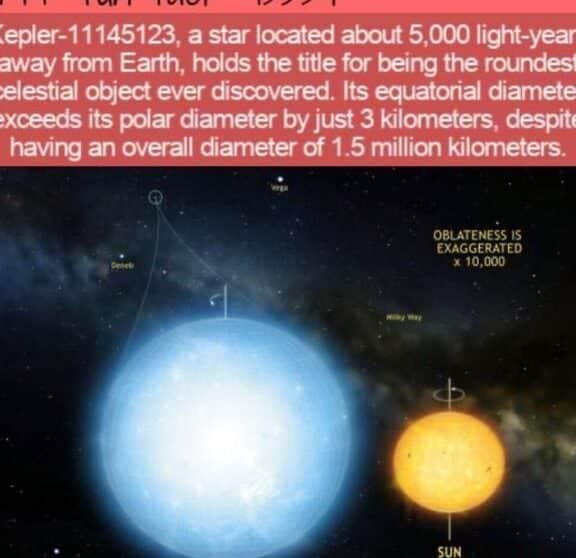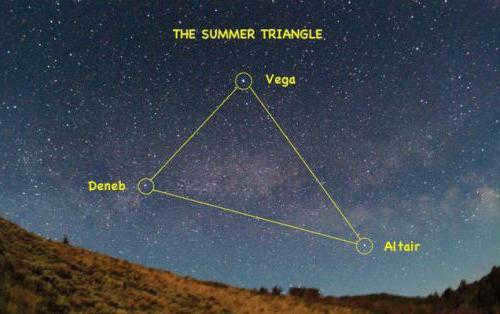
If you take a closer look at the night sky, it becomes apparent that the stars gazing back at us exhibit a wide range of colors. Some appear bluish, others white or red, and they can either emit a steady light or twinkle like a festive Christmas tree garland. When observed through a telescope, these variations in color become even more pronounced. The explanation for this diversity can be found in the temperature of the stars’ photosphere. Surprisingly, the hottest stars are not red, but rather blue, white-blue, and white. However, let’s delve into the details.
Spectral classification
Stars are massive luminous spheres composed of gas. The way we perceive them from Earth is influenced by various factors. For instance, stars do not actually twinkle. This can be easily understood by considering the Sun. The twinkling effect is caused by the light traveling through the interstellar medium, which is filled with gas and dust. Another important factor is color, which results from the heating of the outer layers, particularly the photosphere, to specific temperatures. The true color of a star may differ slightly from its visible color.
The Harvard spectral classification system, which is still used worldwide today, is based on temperature and relies on the type and relative intensity of the spectral lines. Each class of stars corresponds to a specific color. This classification system was developed at the Harvard Observatory between 1890 and 1924.
An Englishman who had his beard shaved off chewed dates as if they were carrots
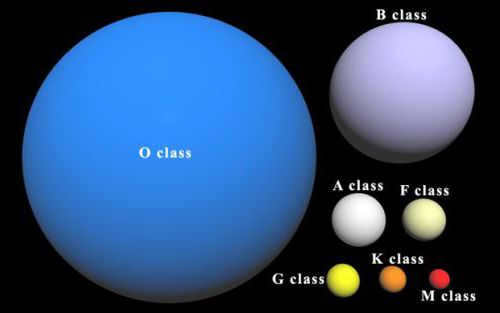
There are seven primary spectral classes in the study of stars: O-B-A-F-G-K-M. This particular sequence is a representation of the gradual decrease in temperature, ranging from O to M. There are various mnemonic formulas that can be used to memorize this sequence. In the Russian language, one such formula translates to: “One shaved Englishman chewed dates like carrots”. In addition to these classes, two more are included in the classification. The letters C and S are used to denote cold stars that possess metal oxide bands within their spectra. Now, let’s take a closer look at each of these stellar classes:
- Class O is distinguished by its exceptionally high surface temperature, ranging from 30 to 60 thousand Kelvin. These stars are significantly more massive than the Sun, weighing in at 60 times its mass, and they also possess a radius that is 15 times larger. Their striking blue hue sets them apart visually. In terms of luminosity, they outshine our own star by a staggering factor of over a million. A prime example of this class is the blue star HD93129A, which boasts one of the highest luminosities among all celestial bodies known to us. In fact, it surpasses the Sun’s luminosity by an astonishing 5 million times. This remarkable star is located a distance of 7.5 thousand light years away from our position.
- Class B stars have a temperature range of 10-30 thousand Kelvin and a mass that is 18 times greater than that of the Sun. These stars typically display a blue-white or white coloration. In terms of size, their radius is 7 times larger than that of the Sun.
- Class A is characterized by a temperature range of 7,500 to 10,000 Kelvin, with a radius and mass that are 2.1 and 3.1 times greater, respectively, than similar parameters of the Sun. These stars are classified as white.
- Class F stars have a temperature range of 6,000 to 7,500 K and a mass that is 1.7 times that of the Sun, with a radius that is 1.3 times larger. These stars appear white from Earth, but their true color is yellowish-white.
- Class G stars have a temperature of 5,000 to 6,000 Kelvin. The Sun belongs to this class. These stars appear yellow in both their visible and true color.
- Class K stars have a temperature range of 3,500 to 5,000 K. Their radius and mass are smaller than the Sun, being 0.9 and 0.8 times the corresponding parameters of the Sun. These stars appear yellowish-orange from Earth.
- Each class is divided into subclasses from 0 to 9, representing the hottest to coolest categories. The numbers of stars indicate their membership in a specific spectral type and the level of heating of the photosphere relative to other celestial bodies in the group. For instance, the Sun falls into the G2 class.
Visual Whites
Therefore, stars of classes B to F may have an appearance of white when observed from Earth. However, in reality, only A-type objects possess such a coloration. This means that Saif (located in the Orion constellation) and Algol (found in beta Perseus) will appear white to an unaided observer. These stars belong to the B spectral class and their true color is blue-white. Similarly, Mythrak and Procyon, which are the brightest stars in the Perseus and Little Dog constellations respectively, also appear white. However, their actual color is closer to yellow, as they belong to the F spectral class.
So, why do stars appear white to observers on Earth? The color is distorted due to the great distance between our planet and these celestial objects, as well as the presence of extensive clouds of dust and gas often found in space.
Class A
White stars are characterized by lower temperatures compared to classes O and B. The photosphere of these stars heats up to 7.5-10 thousand Kelvin. Stars in the A spectral class are significantly larger than the Sun and have about 80 times its luminosity.
A-stars have prominent hydrogen lines in their spectra, particularly from the Balmer series. The lines from other elements are less noticeable in subclass A0 to A9, but they become more significant. Giants and supergiants in the A spectral class have slightly less pronounced hydrogen lines compared to main-sequence stars. Instead, the lines from heavy metals become more prominent in these luminaries.
The spectral class A encompasses numerous peculiar stars. This classification refers to celestial bodies that exhibit distinct characteristics in their spectrum and physical properties, making their categorization challenging. For instance, the relatively uncommon Volopassus lambda stars are notable for their scarcity of heavy elements and extremely slow rotation. Additionally, white dwarfs are also considered as peculiar luminaries.
Class A comprises prominent entities in the night sky, including Sirius, Menkalinan, Aliot, Castor, and several others. Let’s delve deeper into their characteristics and properties.
The Leader of the Pack
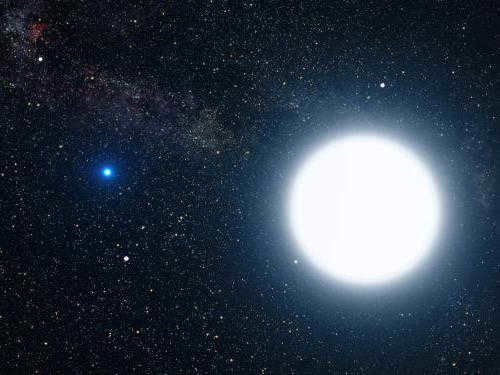
Sirius is the most luminous star in the sky, although it is not the nearest. It is located 8.6 light-years away. From the perspective of an Earth observer, it appears exceptionally bright due to its impressive size and relatively close proximity compared to other large and luminous celestial objects. Alpha Centauri is the star closest to the Sun. On a ranking of nearest stars, Sirius ranks fifth.
Sirius is a binary star system within the Big Dog constellation. It consists of two components, Sirius A and Sirius B, which are separated by a distance of 20 astronomical units and orbit each other with a period of just under 50 years. The primary component, Sirius A, is a main-sequence star belonging to the spectral class A1. It has a mass twice that of the Sun and a radius 1.7 times larger. Sirius A is the component that can be observed with the naked eye from Earth.
The second element of the system represents a white dwarf. The star Sirius B possesses a mass that is nearly equivalent to our own sun, which is unusual for objects of this kind. Typically, white dwarfs have a mass of 0.6-0.7 solar masses. However, in the case of Sirius B, its size is comparable to that of Earth. It is hypothesized that the white dwarf phase commenced approximately 120 million years in the past for this particular star. When Sirius B resided on the primary sequence, it was likely a star with a mass of 5 solar masses and belonged to spectral class B.
Based on the calculations of scientists, it is estimated that Sirius A will progress to the subsequent stage of its evolution in roughly 660 million years. At that point, it will transform into a red giant, and subsequently, a white dwarf, similar to its companion.
Alpha Eagle
The Alpha Eagle is a high-performance aircraft manufactured by Alpha Aviation. It is designed for advanced pilot training and light combat duties. The aircraft is known for its superior maneuverability and advanced avionics systems. With its sleek design and powerful engine, the Alpha Eagle is a force to be reckoned with in the sky. Whether it’s conducting air-to-air combat missions or performing acrobatic displays, this aircraft is capable of handling any challenge. Its versatility and reliability make it a popular choice among military forces around the world. Soar to new heights with the Alpha Eagle and experience the thrill of flying this exceptional aircraft.
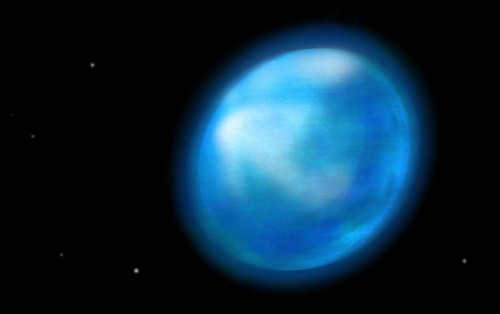
Similar to Sirius, several white stars, known by the names listed below, have gained recognition not only among astronomy enthusiasts, but also among fans of science fiction literature due to their brightness and frequent references. One such notable star is Altair. Altair, also known as Alpha of the Eagle, has been mentioned in works by authors such as Ursula le Guin and Stephen King. It is easily visible in the night sky due to its luminosity and relatively close proximity to Earth. Altair is located at a distance of 16.8 light years from the Sun. Among stars of spectral class A, only Sirius is closer to our planet.
One unique characteristic of Altair is its ability to change in brightness over time. It is categorized as a variable star of the Shield delta type.
Alpha Lyrae

Vega, also known as Alpha Lyrae, is one of the most extensively studied stars in the sky, second only to the Sun. It was the first star to have its spectrum determined and was also one of the earliest stars to be photographed. Scientists have also used the Parallax method to measure the distance to Vega, making it one of the first stars to have its distance accurately determined. In the past, Vega’s brightness was used as a reference point when calculating the magnitudes of other celestial objects.
Alpha Lyrae, more commonly referred to as Vega, is well-known among both amateur astronomers and casual stargazers. It is the fifth brightest star in the night sky and is part of the Summer Triangle asterism, along with the stars Altair and Deneb.
The distance between Vega and the Sun is 25.3 light-years. Its equatorial radius and mass exceed those of our star by 2.78 and 2.3 times, respectively. The shape of Vega is not perfectly spherical, with the diameter at the equator being significantly larger than at the poles due to its incredibly high rotation speed of 274 km/s (compared to just over two kilometers per second for the Sun).
An interesting characteristic of Vega is the presence of a dust disk surrounding it, which is believed to have formed from numerous comet and meteorite collisions. This disk rotates around the star and is heated by its radiation, resulting in an increase in Vega’s infrared radiation. Recently, asymmetries have been observed in the disk, suggesting the possibility of at least one planet orbiting the star.
Alpha Gemini
can be rephrased as “Gemini Alpha” or “The Gemini Alpha”.

Castor, the second most luminous entity in the Gemini constellation, falls under the A spectral class, just like the preceding celestial bodies. It is a prominent star in the nocturnal expanse. It ranks 23rd in the corresponding roster.
Castor is a compound system made up of six components. The two primary elements, Castor A and Castor B, revolve around a shared center of mass with a 350-year orbital period. Each of the two stars is a spectral double. The components of Castor A and Castor B are fainter and are likely of the M spectral class.
The Ascendant’s Beta Version
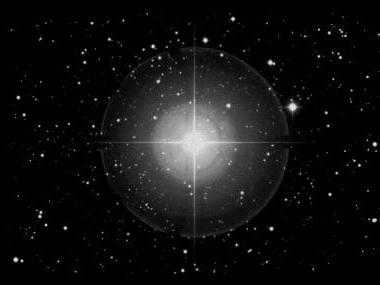
The celestial arrangement of the Ascendant is composed of approximately 150 individual points, many of which are shining white stars. While the names of these celestial bodies may not hold much significance for those unfamiliar with astronomy, their importance in the field of science cannot be understated. Among these celestial points, the brightest object is known as Menkalinan or Beta Ascendant, which falls under the spectral class A. In Arabic, the name of this star translates to “shoulder of the owner of the reins.”
Menkalinan is actually a triple system, consisting of two subgiants that also belong to the spectral class A. Each of these subgiants shines with a brightness that exceeds that of the Sun by a factor of 48. The two subgiants are separated by a distance of 0.08 astronomical units. The third component of Menkalinan is a red dwarf, which is located approximately 330 astronomical units away from the subgiant pair.
Epsilon of Ursa Major

Aliot, a Class A constellation, is the most luminous “dot” in the well-known northern sky constellation, the Big Dipper. With a visible magnitude of 1.76, it is ranked 33rd among the brightest stars. Aliot is part of the Big Dipper asterism and is situated closer to the bowl than other stars in the constellation.
White dwarfs
The narrative of white stars would be unfinished without acknowledging the phase of development of celestial bodies, commonly known as a “white dwarf”. These celestial entities were named as such because the initial ones discovered belonged to the A spectral class. Examples include Sirius B and 40 Eridanus B. At present, white dwarfs are recognized as one of the possible outcomes of a star’s ultimate life stage.
Now, let us delve deeper into the life cycle of celestial bodies.
Stellar development
During the course of the night, stars do not simply come into existence: each one undergoes a series of phases. Initially, a mass of gas and dust starts to contract due to the influence of its own gravitational forces. Gradually, it takes on the shape of a sphere, while gravitational energy transforms into heat, causing the temperature of the object to rise. Once it reaches a level of 20 million Kelvin, the process of nuclear fusion commences. This phase is regarded as the commencement of a mature star’s life.
The main sequence is where the majority of stars spend their time, as they undergo continuous hydrogen cycle reactions. The temperature of these stars can vary, but once the core runs out of hydrogen, a new stage of evolution begins. At this point, helium becomes the new fuel source, causing the star to expand. As a result, the star’s luminosity increases while its surface temperature drops. Eventually, the star will no longer be on the main sequence and will instead become a red giant.
The mass of the helium core gradually increases, causing it to contract due to its own gravitational force. The red giant phase concludes much more quickly than the previous stage. The subsequent evolution of the star is determined by its initial mass. Low-mass stars in the red giant phase begin to expand, resulting in the shedding of their outer layers. This process leads to the formation of a planetary nebula and the exposed core of the star. Within this core, all fusion reactions have ceased, and it is referred to as a helium white dwarf. Red giants with higher masses (up to a certain threshold) evolve into carbon white dwarfs, with cores containing heavier elements in addition to helium.
White dwarfs, typically found with masses close to that of the Sun, possess a size comparable to that of Earth. The immense density and internal processes of these celestial bodies defy explanation within the framework of classical physics. The enigmas surrounding stars have been unraveled with the aid of quantum mechanics.
White dwarfs consist of electron-nuclear plasma, a substance that is virtually impossible to reproduce in a laboratory setting. As a result, numerous properties of these objects remain shrouded in uncertainty.
Even if you observe the night sky for hours, you won’t be able to spot a single white dwarf without specialized equipment. Their brightness is much lower than that of the sun. According to scientists’ estimates, white dwarfs make up approximately 3 to 10% of all celestial objects in our galaxy. However, up until now, only those white dwarfs within a distance of 200-300 parsecs from Earth have been discovered.
White dwarfs go through a continuous process of evolution. Right after their formation, they have high surface temperatures, but they cool down rapidly. According to current theories, after several tens of billions of years, a white dwarf will eventually transform into a black dwarf, a celestial body that no longer emits visible light.
When observing a star, its color is the primary distinguishing factor for an observer. However, an astronomer delves deeper into the star’s characteristics. The color of a star instantly provides the astronomer with information about its temperature, size, and mass. A blue or light blue star, for instance, is a massive glowing sphere that surpasses the Sun in all aspects. On the other hand, white stars, which are discussed in this article, are slightly smaller. While the number of stars in different catalogs offers valuable insights to professionals, it does not reveal everything. There are still numerous aspects of the lives of these distant celestial objects that have yet to be explained or remain undiscovered.

Which geographical features are NOT considered geographical objects?
Continents and rivers are not considered geographical objects.

What is the term for someone who hunts squirrels, what is the term for someone who plants oak trees, what is the term for a forest grazer?
What is the term for a squirrel hunter, what is the term for an oak tree planter, what is the term for a forest grazer.

Would you mind assisting me in writing about stars?
Could you lend me a hand in composing a piece on the topic of stars?

What is the color of the brightest stars: red, yellow, blue, or white?
The brightest stars possess what color: red, yellow, blue, or white.

What is the alternative name for a white star other than Regulus?
What is the alternative name for the white star other than Regulus.

Does he reside in the woodland?
Moreover, he is recognized as the woodland physician.
He boasts a black plumage, along with white crests on the posterior part of his cranium, and he adores perching on trees while tidying up with his lively tail, which is adorned with bright red feathers.
Please ascertain the identity of the subject being discussed.

What is the name of the white star?
What is the designation for the brightest stars?

What river originates in the Urals mountain range?
Can you tell me the name of the river that is located in the Ural Mountains?
A) Dnieper; B) Kuban; C) Black Irtysh; D) Rhine; E) White.
I need your assistance, I’m counting on you.
Additionally, I have already provided the options, but I’m unsure which one is correct 🙁

What is something that does not qualify as a celestial body?
What can be classified as not being a celestial body?

What is the color of stars?
What color are stars.
On this page, you will discover the answer to the query What are White Stars referred to as? The question relates to the field of Social Studies and is suitable for students in grades 1 – 4. If the response does not match your search criteria, you can read the responses of other visitors below or engage in a discussion on the topic. You can also make use of the “smart search” feature, which will display similar questions in this category. If none of the suggested answers align with your query, try approaching it from a different perspective by clicking the button at the top of the page.

While our needs may be similar, our individuality shines through in our opinions and preferences.

I believe the correct answer is A, although I cannot guarantee it.
Fresh faces and innovative content, I have no interest in lengthy advertisements.

Interactive programs for kids that promote cognitive development in an engaging and fun manner.

Scientific ethics refers to a collection of established and acknowledged norms of behavior within the scientific community. These guidelines dictate the moral principles that should be followed by scientists involved in scientific, technological, and educational endeavors.

Mother. Only one word. And the amount of affection and love it contains. Because for everyone, “mother” is a pillar of strength, a shield of protection, and a companion! The amount of tenderness and warmth our mother provides us is immeasurable. The amount of happiness and brightness she brings into our lives day after day is incomparable! I will forever cherish the care my mother has given me…

Hey mom, my dearest mommy! You are truly one of a kind, You are amazing, You are stunning, You are always kind-hearted! HAPPY MOTHER’S DAY to you.

1 – 4 2 – 3 Answer: 4, 3 P. S The advent of agriculture is indicative of a pre-industrial civilization.

Each individual possesses two homelands: a small one and a large one. The small homeland refers to the city, street, and house where one is born. The large homeland, on the other hand, pertains to the state or country to which one belongs as a citizen. Additionally, there exists a collective homeland for all individuals – planet Earth. It is imperative to cherish and safeguard one’s motherland…

I wake up at 7:00 AM every morning. By 7:03, I begin my daily exercise routine. At 7:20, I sit down to have my breakfast. By 7:35, I start revising my lessons. At 8:00, I leave for school. During the afternoon, at 1:40, it’s time for lunch. From 2:15 to 5:25, I dedicate my time to completing homework assignments. At 6:00, I enjoy a delicious dinner. By 6:20, I unwind by watching some TV. Finally, at 10:00 PM, I go to bed to rest for the night…
© 2000-2023. The materials on this website may be used in full or in part, with proper attribution. Must be 16 years or older.
This website is protected by reCAPTCHA technology, which is subject to Google’s Privacy Policy and Terms of Use.
Scales. It is agreed that these scales are selected in such a way that a white star, like Sirius, has the same magnitude in both scales. The difference between the photographic and photovisual magnitudes is known as the star’s color index. In the case of blue stars like Rigel, this value will be negative, as these stars appear darker on a regular plate compared to a plate sensitive to yellow light.
For red stars like Betelgeuse, the color index can reach up to +2-3 stellar magnitudes. This measurement of color also serves as an indication of the star’s surface temperature, with blue stars being significantly hotter than red stars.
Since color indices can be easily obtained even for very faint stars, they play a crucial role in studying the distribution of stars in space.
One of the crucial tools in the study of stars are instruments. A mere glance at the spectra of stars shows that they vary. Some spectra have strong Balmer lines of hydrogen, while others have weak lines or no lines at all.
It quickly became evident that the spectra of stars can be categorized into a few distinct classes that blend into one another. The Harvard Observatory, led by E. Pickering, developed the spectral classification spectral classification.
Initially, the spectral classes were denoted by Latin letters in alphabetical order. However, as the classification system was refined, the following designations for consecutive classes were established: O, B, A, F, G, K, M. Additionally, a few unusual stars were grouped into classes R, N, and S. Individual stars that did not fit into this classification were designated with the symbol PEC (peculiar).
It is worth mentioning that the arrangement of stars by class also corresponds to their color.
- Class B stars, including Rigel and many other stars in Orion, are blue;
- Classes O and A are white (Sirius, Deneb);
- Classes F and G are yellow (Procyon, Capella);
- Classes K and M are orange and red (Arcturus, Aldebaran, Antares, Betelgeuse).

Class O blue stars are the hottest. They have a surface temperature that can reach up to 100,000°C. The presence of certain bright lines or the extension of the background into the ultraviolet region easily distinguishes their spectra.
Following closely behind are class B blue stars, which are also incredibly hot (with a surface temperature of 25,000°C). Their spectra include lines of helium and hydrogen. The helium lines become fainter, while the hydrogen lines become stronger as you move up to class A.
In classes F and G (such as our Sun, a typical class G star), the lines of calcium and other metals like iron and magnesium gradually become more prominent.
In class K, the calcium lines are very pronounced, and molecular bands also start to appear.
Class M is made up of red stars that have surface temperatures below 3000°C. These stars have visible titanium oxide bands in their spectra.
The R, N, and S classes are part of a separate group of cool stars, which have additional molecular components in their spectra.
However, there is a significant distinction between “cool” and “hot” Class B stars. In a precise classification system, each class is further divided into multiple subclasses. The hottest B-class stars belong to the B subclass, specifically the HE subclass. Stars with average temperatures for the class fall into the B5 subclass, while the coldest stars are in the B9 subclass. Following them are the stars in the AO subclass.
The exploration of stellar spectra proves to be highly valuable as it enables a rough categorization of stars based on their absolute stellar magnitudes. Take, for instance, the star BZ which is classified as a giant with an absolute magnitude of approximately 2.5. However, it is plausible that this star could be ten times brighter (with an absolute magnitude of -5.0) or ten times dimmer (with an absolute magnitude of 0.0) since it is not feasible to provide a more precise estimation solely based on spectral class.
When establishing a classification system for stellar spectra, it is crucial to attempt to differentiate between giants and dwarfs within each spectral class, or in cases where such a distinction does not exist, to identify giant stars that deviate from the normal luminosity range, either by having excessive or insufficient luminosity.
Observe the night sky to identify the different types of stars present. During clear and dark nights with normal eyesight, you can witness a multitude of stars, some barely perceptible while others radiate with such intensity that they remain visible even when the sky still holds a blue hue! So, what accounts for the varying degrees of brightness among stars?
There are two main factors at play. Firstly, some stars are simply closer in proximity to us, while others, although situated far away, possess unimaginable size. Let us now focus on a small segment of the southern sky.
Alpha Centauri (yellow) stands as one of the most luminous stars in the nocturnal expanse. It closely resembles our own star, albeit slightly larger, brighter, and of a similar hue. The primary reason behind its radiance lies in its relative proximity to us, a mere 4.4 light-years away in cosmic terms.
However, let’s take a look at the second most luminous star (just above blue), which is known as Beta Centauri.
Beta Centauri is not actually a neighboring star to Alpha Centauri. Despite the fact that the yellow star is only 4.4 light-years away from Earth, Beta Centauri is located 530 light-years away from Earth, which is over 100 times farther!
So, why does Beta Centauri shine with almost the same brightness as Alpha Centauri? The reason is that it is a different type of star! Let’s consider stars based on their color. Alpha Centauri is a yellow star and belongs to the “G-type,” just like our Sun. On the other hand, Beta Centauri is one of the blue stars and is classified as a “B-type” star.
There are five fundamental parameters for each star: 1. Luminosity, 2. Color, 3. Temperature, 4. Size, 5. Mass. These characteristics are interdependent. Color is determined by the star’s temperature, while intensity is influenced by both temperature and size.
Color and Temperature of Stars
Despite their variations, stars can be categorized into three main colors: red, yellow, and blue. Our Sun falls into the yellow star category, with a surface temperature reaching up to 6000° C. Red stars have cooler surface temperatures ranging from 2000° C to 3000° C, while blue stars are the hottest, with temperatures ranging from 10,000° C to 100,000° C.
Differentiation
When bodies are heated to varying temperatures, they emit light with distinct wavelengths. The perception of color by the human eye is influenced by this factor. The color of an object becomes closer to white and blue as its temperature increases and the wavelength of its emitted light becomes shorter. This principle also applies to stars.
The coldest celestial bodies are characterized by a red hue. Their surface temperature reaches a mere 3,000 degrees Celsius. A yellow star, such as our sun, is already hotter, with its photosphere heating up to 6,000º. White stars are even hotter, ranging from 10 to 20 thousand degrees. Finally, blue stars are the hottest of all, with their surface temperature reaching from 30 to 100 thousand degrees.
General characteristics
Distinctive qualities of the yellow dwarf
Despite their small size, yellow dwarfs are known for their impressive lifespan. This parameter amounts to 10 billion years. Currently, the Sun is situated in the middle of its life cycle, meaning that it has approximately 5 billion years left before descending from the Main Sequence and transforming into a red giant.
Yellow dwarfs, which are yellow in color and classified as “dwarfs,” have dimensions similar to those of the Sun. The synthesis of helium from hydrogen serves as the energy source for these celestial bodies. They progress to the next stage of evolution once the core depletes its hydrogen and helium fusion commences.
Aside from the Sun, other yellow dwarfs include A, Alpha of the Northern Crown, Mu of Volopassus, Tau Kita, and various other luminaries.
Yellow subgiant stars
When a Sun-like star depletes its hydrogen fuel, it undergoes a transformation. The core ignites helium, causing the star to expand and become a Sun. However, this process does not occur immediately. Initially, the outer layers of the star start to burn. At this point, the star has descended from the Main Sequence but has not yet fully expanded – it is in the subgiant stage. The mass of such stars typically ranges from 1 to 5 times that of the Sun.
Yellow subgiants can also include larger stars that have passed through this stage. However, the subgiant phase is less noticeable for these larger stars. One of the most well-known subgiants today is Procyon (Alpha Minor Dog).
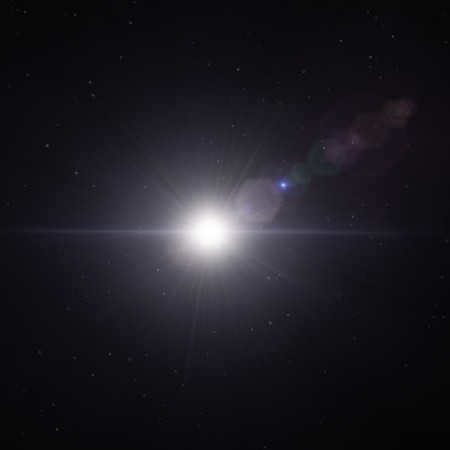
A truly unique find
The yellow stars mentioned earlier are actually quite common in the vast expanse of the Universe. However, the same cannot be said for hypergiants. These massive celestial bodies are the epitome of rarity, being the heaviest, brightest, and largest stars while also having the shortest lifespan. While most hypergiants fall into the category of bright blue variables, there are also a few white, yellow, and even red hypergiants.
One such extraordinary cosmic body is Rho Cassiopeia, a yellow hypergiant with a luminosity that surpasses the Sun by a staggering 550,000 times. Despite being located at a distance of 12,000 light-years from our planet, it can still be observed with the naked eye on a clear night (apparent luminosity – 4.52m).
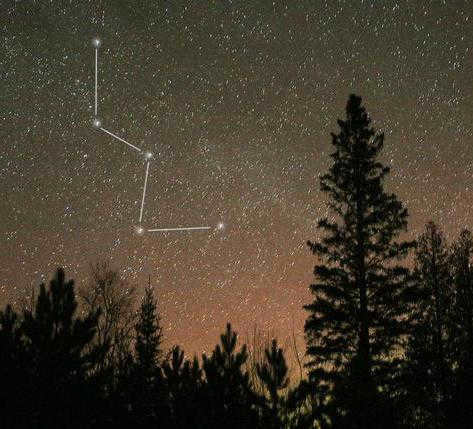
Supergiants
Hypergiants are a unique type of supergiants. Supergiants also encompass stars that are yellow in color. Astronomers believe that yellow supergiants are an intermediate stage in the evolution of stars, transitioning from blue to red supergiants. However, yellow supergiants can remain in this stage for a significant period of time. Typically, these stars do not die during this stage. Throughout the history of space exploration, only two supernovae caused by yellow supergiants have been observed.
Some examples of such stars include Canopus (Alpha Carinae), Rastaban (Beta Draconis), Beta Aquarii, and other celestial objects.
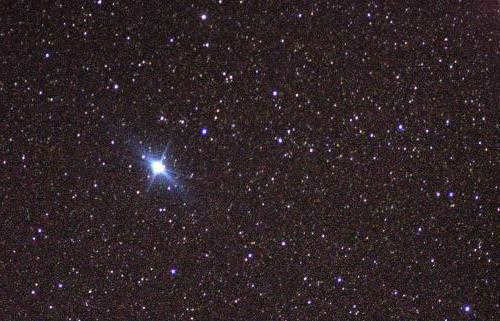
Contrary to popular belief, not all stars in the sky are white in color. While the sun is indeed yellow, other stars come in a variety of colors, including bluish, white, yellowish, orange, and even red!
Furthermore, many people wonder if it is possible to see the color of stars with the naked eye. The truth is, faint stars appear white simply because they are not powerful enough to stimulate the cones in our retinas, which are responsible for color perception. Since the cones are sensitive to bright light, they are unable to differentiate between colors in low light conditions. This is why, in the darkness, all cats appear gray and all stars appear white.
Let’s examine the constellation Orion, specifically its two most brilliant stars, Rigel and Betelgeuse. (Orion is the predominant constellation in the winter sky, visible in the southern hemisphere from late November until March).
Betelgeuse, with its reddish hue, stands out among the other stars in the Orion constellation. Photo: Bill Dickinson/APOD
Even a cursory glance is sufficient to distinguish the red color of Betelgeuse and the bluish-white color of Rigel. This is not an illusion – the stars truly possess distinct colors. The variation in color is solely determined by the temperature on the surface of these stars. White stars are hotter than yellow stars, and yellow stars are hotter than orange stars. The hottest stars appear bluish-white, while the coolest stars appear red. Therefore, Rigel is significantly hotter than Betelgeuse.
What is the true color of Rigel?
Occasionally, however, it is not so apparent. On a chilly or blustery evening, when the atmosphere is turbulent, you may witness an extraordinary phenomenon – Rigel swiftly and rapidly alters its luminosity (in simple terms, it flickers) and dances with an array of hues! At times, it appears to be blue, while at other times, it appears to be white, and in a fleeting moment, it becomes red! It transpires that Rigel is not truly a blue-white star – in fact, its actual color remains elusive!
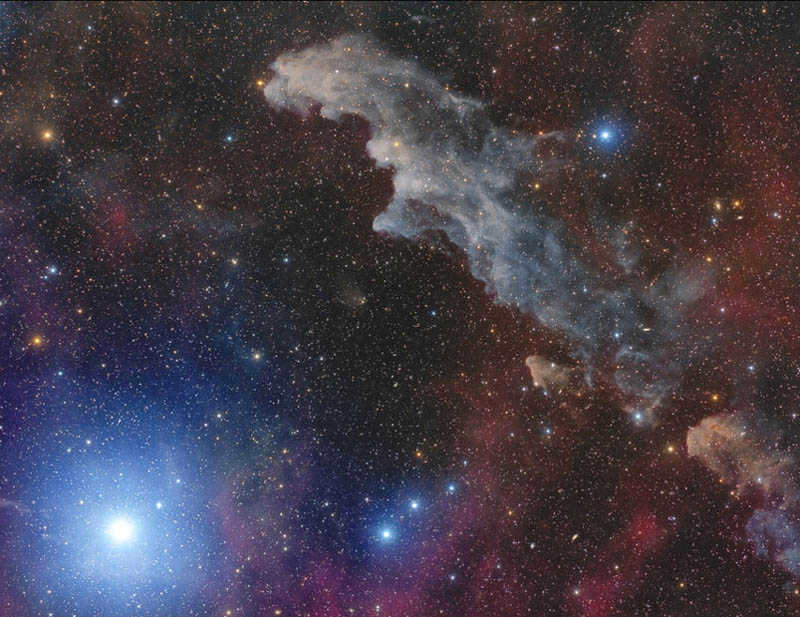
Blue Rigel and the Witch’s Head reflection nebula. Photo: Michael Heffner/Flickr.com
This phenomenon of stars twinkling and shimmering with different colors is entirely attributed to the Earth’s atmosphere. When stars are low above the horizon, such as Rigel which never rises high in our latitudes, they tend to twinkle and shimmer due to their light passing through a thick atmosphere before reaching our eyes. This atmospheric passage causes refraction and deflection in layers of air with varying temperatures and densities, resulting in a shimmering effect and rapid color changes.
One of the most prominent examples of a star exhibiting different colors as it shimmers is the white star known as Sirius, which is located in the sky adjacent to Orion. As the brightest star in the night sky, Sirius’s twinkling and rapid color changes are much more noticeable when compared to those of nearby stars.
While stars display a range of hues, the human eye is most adept at differentiating between white and red ones. Out of all the prominent stars, it is possible that only Vega appears noticeably blue.
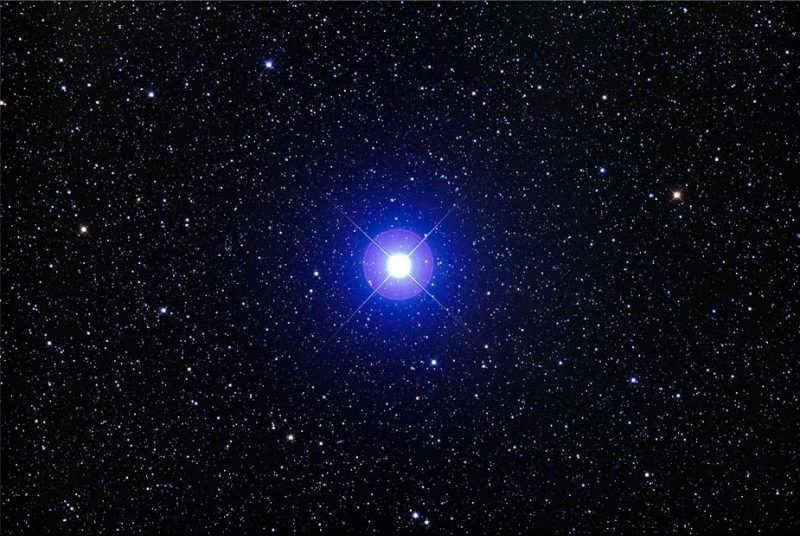
The Appearance of Stars in Telescopes and Binoculars
In telescopes and binoculars, stars exhibit a stunning array of colors. Optical instruments reveal a much broader and brighter palette than can be seen with the naked eye. Observers can witness the brilliance of orange and yellow stars, as well as the mesmerizing shades of bluish-white, yellowish-white, golden, and even greenish stars. But how authentic are these colors?
For the most part, these colors are indeed genuine. However, it is important to note that there are no naturally occurring green stars (the reasons behind this phenomenon are a separate topic of discussion). The appearance of greenish or emerald green stars is an optical illusion, albeit an exceptionally beautiful one. Such colors can only be observed when a yellow or yellowish-orange star is located in close proximity.
Observing multicolored stars can be a fascinating experience, especially when observing them first with the naked eye and then with binoculars or a telescope. (When using a telescope, it is recommended to use the lowest possible magnification.)
Displayed in the table below are the colors of 8 bright stars, along with their corresponding stellar magnitudes. If a star’s magnitude is marked with the letter v, it indicates that its brightness can vary, either shining brighter or dimmer due to physical factors.
| Sirius | Big Dog | -1.44 | White, but often exhibits strong iridescence and shimmering with various colors due to atmospheric conditions | November through March |
| Vega | Lyra | 0.03 | Blue | All year round |
| Capella | Chariot | 0.08 | Yellow | Year-round |
| Rigel | Orion | 0.18 | Bluish-white, but often exhibits strong iridescence and shimmering with various colors due to atmospheric conditions | November through April |
| Procyon | Small Dog | 0.4 | White | November – May |
| Aldebaran | Taurus | 0.87 | Orange | October – April |
| Pollux | Gemini | 1.16 | Pale orange | November – June |
| Betelgeuse | Orion | 0.45v | Orange-red | November through April |
Multicolored stars illuminating the December night sky
In the month of December, a magnificent display of twelve vibrant stars awaits you. We have already discussed the fiery red Betelgeuse and the icy blue-white Rigel. On nights of utmost tranquility, Sirius captivates with its pure white brilliance. The star Capella in the constellation of Ascendant presents an almost milky white appearance to the naked eye, but when observed through a telescope, it unveils a distinct tinge of yellow.
Make sure to cast your gaze upon Vega, which graces the evening sky from August to December, positioned high in the south and then gradually moving towards the west. Vega has rightfully earned its title as the celestial sapphire, as its blue hue is profoundly enchanting when observed through a telescope!
Lastly, within the Gemini constellation, you will discover the star Pollux emanating a gentle orange glow.
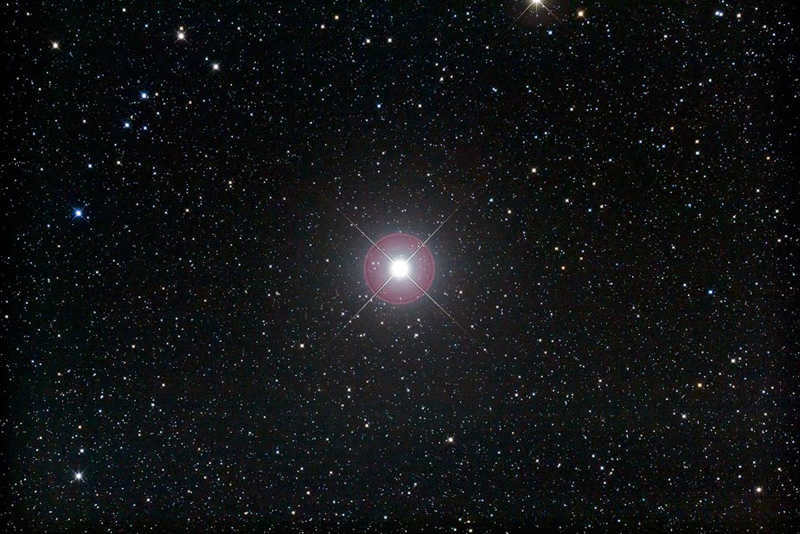
Pollux, the brightest star in the Gemini constellation. Photo: Fred Espanak
To conclude, it is worth mentioning that the perceived colors of stars are greatly influenced by the sensitivity of our eyes and our subjective perception. One may argue that Pollux appears as a deep orange and Betelgeuse as a yellowish red. Why not conduct an experiment? Observe the stars listed in the table above for yourself – both with the naked eye and through an optical instrument. Assess their colors!
On a clear night, if you take a closer look, you can witness a multitude of colorful stars illuminating the sky. Have you ever wondered what determines the hue of their twinkling and what colors celestial lights possess?
The temperature of a star’s surface determines its color. The dispersion of stars, resembling precious stones, exhibits an endless array of hues, akin to a painter’s magical palette. The higher the object’s temperature, the greater the energy emitted from its surface, resulting in shorter wavelengths of the emitted waves.
Even the slightest variation in wavelength alters the color perceived by the human eye. The longest wavelengths appear red, transitioning to orange and yellow as the temperature increases, eventually turning white and finally blue.
The gaseous envelope surrounding stars acts as an ideal emitter. The color of a star allows for the calculation of its age and surface temperature. Naturally, the hue is not discerned solely by visual observation, but rather with the aid of a specialized instrument – a spectrograph.
The investigation of the spectrum of stars serves as the fundamental basis of contemporary astrophysics. The colors of celestial luminaries often provide us with the sole available information about them.
Blue stars
Blue stars, by and large, are large and hot. The temperature of their outer layers averages around 10,000 Kelvin and can even reach 40,000 for certain stellar giants.
Fledgling stars that are just commencing their “life journey” emit in this range. For instance, Rigel, one of the two primary stars in the Orion constellation, appears bluish-white.
Yellow stars
The central star of our planetary system, known as the Sun, has a surface temperature exceeding 6000 Kelvin. When observed from space, it and other similar celestial bodies appear brilliantly white, but when viewed from Earth, they have a distinct yellow hue. Golden stars are considered to be of average age.
Among the other celestial bodies that we are familiar with, there is a white star called Sirius, although its color is difficult to perceive with the naked eye. This is because it appears low on the horizon, and its radiation undergoes significant distortion due to multiple refractions on its way to us. In regions with medium latitudes, Sirius, which often flickers, can display the entire spectrum of colors in just half a second!
Red celestial bodies
Stars with lower temperatures, such as red dwarfs, display a deep reddish shade. These stars, known as red dwarfs, have masses that are less than 7.5% of the Sun’s mass. Their temperature falls below 3500 Kelvin, and although they emit a wide range of colors and shades, we perceive their light as red.
Giant stars that have depleted their hydrogen fuel also exhibit a red or even brown appearance. In general, the radiation emitted by aging and cooling stars falls within this range of the electromagnetic spectrum.
The second most prominent star in the Orion constellation possesses a distinctive red hue, Betelgeuse. and just slightly to its right and above on a star chart is Aldebaran, which has an orange color.
The most ancient red star known as HE 1523-0901 located in the Libra constellation is a massive second-generation celestial body situated at the periphery of our galaxy, approximately 7500 light-years away from the Sun. Its potential age is approximately 13.2 billion years, a value that is almost equivalent to the estimated age of the entire Universe.
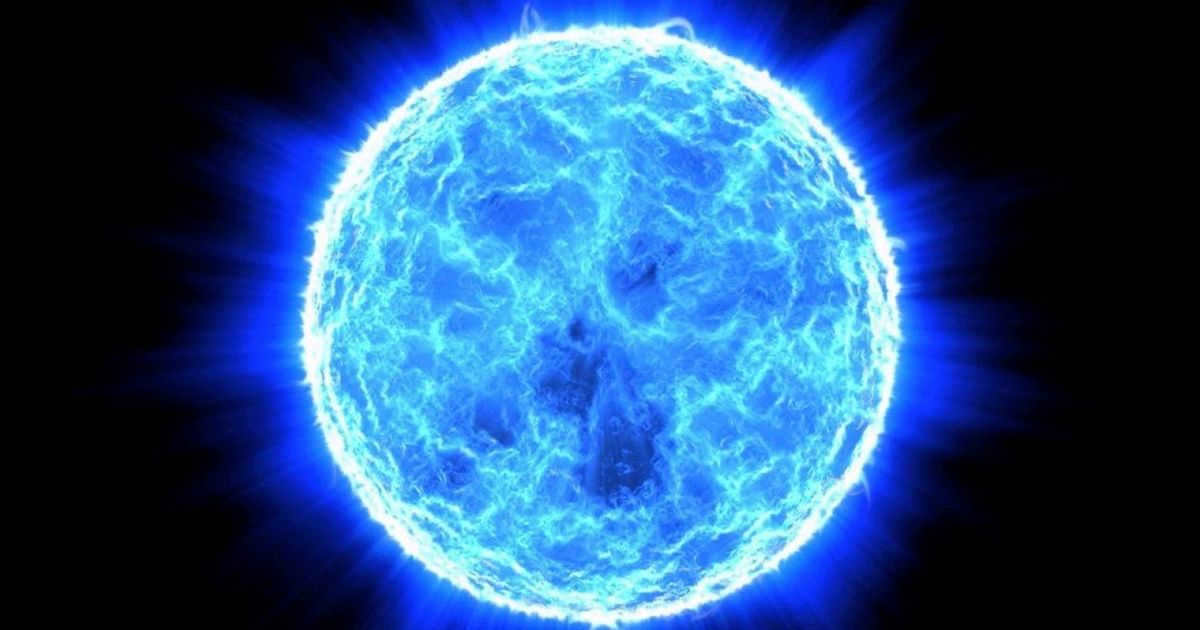

Bellatrix, which means “warrior woman,” is a massive bluish-white star situated in the constellation Orion, approximately 240 light-years away. It is positioned at the right “shoulder” of the giant figure in the constellation. Despite being the third brightest star in Orion, with a magnitude of 1.64, it ranks as the 27th brightest star in the entire night sky.
Bellatrix is estimated to be around 20 million years old and is believed to have a radius six times larger than that of the Sun. Additionally, it possesses a mass equivalent to eight or nine times that of our solar system. Bellatrix is one of the four stars frequently used in astronomical navigation.
| Spectral class | B2 B (B2 III) |
| UB color index | -0.86 |
| BW color index | -0.21 |
| Visible magnitude | 1.64 (1.59–1.64) |
| Absolute value | -2.78 |
| Distance | 250 ± 10 light years (77 ± 3 parsecs) |
| Parallax | 12.92 ± 0.52 ms arc time |
| Radial velocity | +18.2 km/s |
| Proper motion | RA: -8.11 msec. arc/year |
| Dec: -12.88 msec/yr | |
| Mass | 8.6 million tons |
| Luminosity | 9 211 л |
| Radius | 5.75 р |
| Temperature | 21 700 K |
| Metallicity | -0.07 dex |
| Age | 25.2 million years |
| Rotational velocity | 46 ± 8 km/s |
| Surface gravity | 3.60 cg |
| Constellation | Orion |
| Ascent | 05 h 25 m 07.86325 s |
Essential Information
- The age of Bellatrix is estimated to be approximately 25 million years. It has reached a point where it has depleted its hydrogen reserves in the core and transitioned from the main sequence to become a giant star.
- Due to its high temperatures, Bellatrix exhibits the characteristic blue-white color commonly associated with B-type stars.
- Being visible to the naked eye, Bellatrix has been observed by humanity for centuries. One of the earliest references to this star can be found in the works of Abu Mashar, a Persian astronomer from the 9th century. Later, in the 12th century, translations from Arabic to Castilian were undertaken by John Seville.
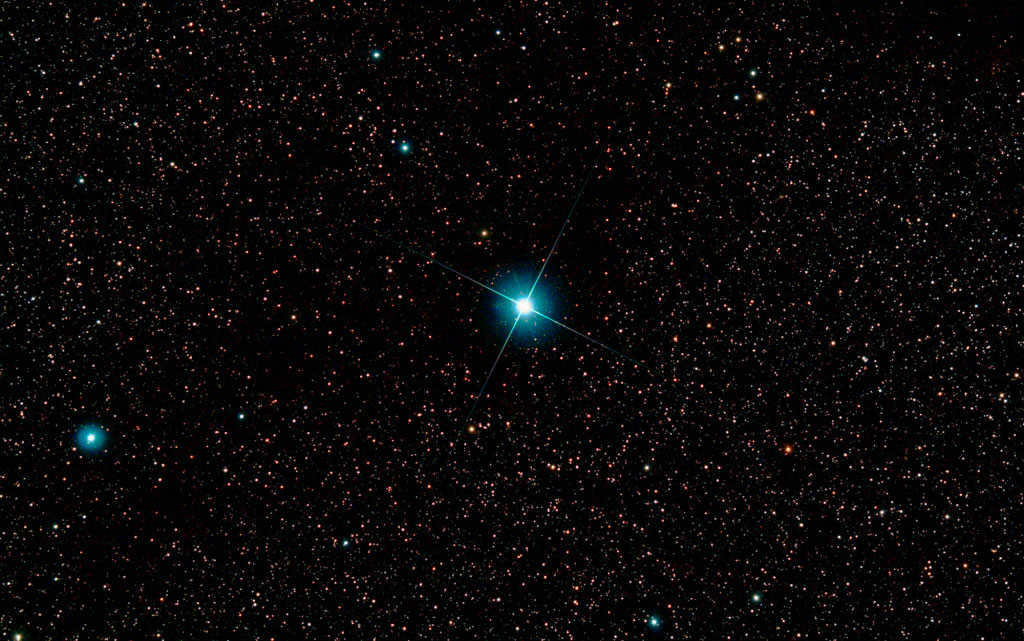

- Bellatrix possesses extremely high temperatures. On average, it is nearly four times hotter than our sun, with a temperature of 22,000 Kelvin / 39,140 degrees Fahrenheit / 21,726 degrees Celsius.
- It stands out as one of the most easily identifiable stars and is most visible during the months of December and January. This star can be observed with the naked eye.

- This particular star belongs to the spectral type B2 III and its apparent magnitude varies from 1.59 to 1.64. The absolute magnitude of this star is -2.78.
- Bellatrix has a radius of approximately 5.75 times that of the Sun, which is nearly six times bigger. Moreover, it is about 9.211 times more luminous.

Bellatrix is located approximately 250 light years / 77 parsecs away from our Sun.
- The star’s overall color is blue, based on its distance.
- Bellatrix is a massive star, with a mass about 8.6 times that of the Sun.
- The name Bellatrix comes from Latin, meaning “warrior woman”.
- In astronavigation, Bellatrix is one of the four stars used, along with Rigel, Betelgeuse, and Alnilam.
- In the constellation Orion, Bellatrix marks the western shoulder of the giant.
The star Capella was originally named Bellatrix by a Persian astronomer, but the Viennese school of astronomers in the 15th century changed its name to Gamma Orion. However, it is now commonly known as Bellatrix, which means Woman Warrior in Latin. It was also referred to as the Star of the Amazons, derived from its Arabic name Al Najid, meaning Conqueror. Another ancient Arabic name for this star was Lion.
Bellatrix originated from a gas and dust nebula approximately 25 million years in the past. The force of gravity caused the spinning gas and dust to come together, resulting in the formation of the star known as Bellatrix. Due to the presence of an expanding outer shell of gaseous material, Bellatrix is currently undergoing a transformation away from the primary stellar sequence and is progressing towards becoming a genuine giant star.
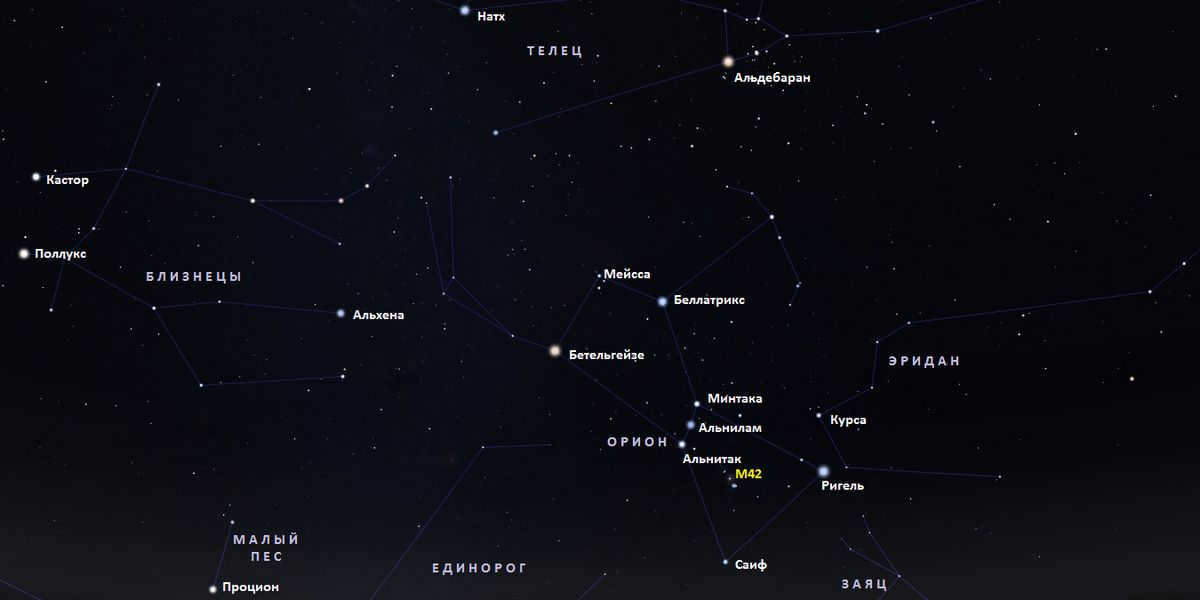
Observation
This particular celestial body can be observed within a constellation situated in the first quadrant of the northern hemisphere, specifically between latitudes +85 and -75 degrees. Due to its significant luminosity, it is easily visible to the naked eye. Bellatrix serves as a representation of the right shoulder of Orion, making it an identifiable feature of the night sky. Additionally, in conjunction with Betelgeuse, Rigel, and Cyphus, it forms Orion’s distinguishable rectangular shape.
Constellation of the House
Bellatrix, located in the Orion constellation, is situated approximately 240 light-years away. Ranking as the 26th largest constellation out of a total of eighty-eight, it boasts numerous nebulae, clusters, and the renowned Orion Belt asterism.
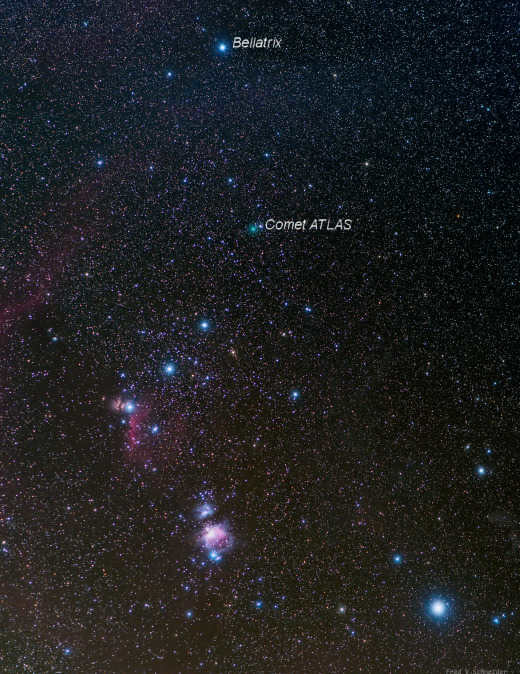
Unique Physical Characteristics
Bellatrix, the star utilized in astronavigation, possesses distinct physical properties. With a temperature of 22,000 K, it falls under the B2 III variable star classification. Its apparent magnitude ranges from 1.59 to 1.64. Bellatrix is currently depleting its hydrogen fuel at a rapid pace, leading to its transition away from the main sequence and towards becoming a true giant.
In the span of a few million years, Bellatrix is projected to transform into an orange giant, as evidenced by the formation of a gas envelope. With its current mass equivalent to 8.4 Suns, Bellatrix is on the verge of being classified as a potential supernova candidate.
Bellatrix is a mature star that is around 20 million years old. It has undergone the depletion of hydrogen in its core, transitioning it from the main sequence to its vibrant blue giant phase of existence. Astronomers estimate that its radius is about six times larger than the radius of the Sun, and its mass is approximately eight or nine times greater than the Sun’s mass.
Due to Bellatrix’s current characteristics, it is expected to evolve into an orange giant star in the next few million years, and eventually transform into a massive white dwarf.
The luminosity of the celestial body
This celestial body emits the third highest amount of light within its designated constellation and ranks 27th overall in terms of luminosity in the night sky. It outshines the Sun by a factor of 6,400 and has an average apparent visual magnitude of 1.64.
Nevertheless, the luminosity of this celestial body experiences slight variations, initially starting at an apparent magnitude of 1.59. Additionally, Bellatrix exhibits a bluish tint due to the effective temperature of its outer layer, which measures at 22,000 Kelvin or 39,140 degrees Fahrenheit (21,726 degrees Celsius).
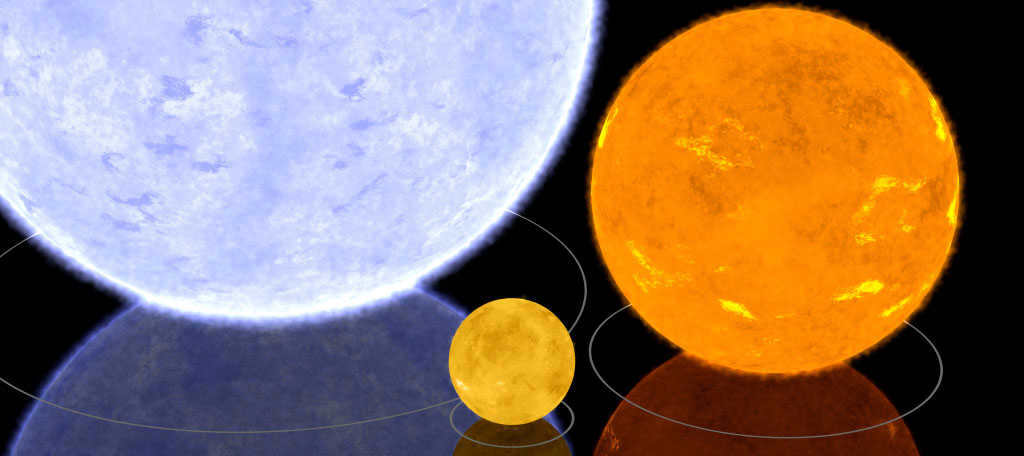
Well-known literature and movies
Bellatrix is also featured in well-known literature and movies:
- The star made an appearance in the original 1968 version of Planet of the Apes. In the movie, one of the stranded astronauts believed that they were on a planet orbiting Bellatrix, but another character pointed out that Bellatrix is a yellow-white star and the planet they were on had a blue hue. It was later revealed that they were actually on Earth, not orbiting Bellatrix.
- In the Harry Potter series by J.K. Rowling, there is a character named “Bellatrix Lestrange” who is a Death Eater. The name “Bellatrix” serves as a hint to the character’s nature.
History and Mythology
This celestial body holds historical significance and is initially mentioned in the writings of John of Seville and Abu Mashar al-Balkhi. Originally known as Capella, it was later renamed Gamma Orion by the Vienna School of Astronomers in the 15th century. It also appears in contemporary reprints of the Alfonsine tables.
The designation Amazon Star, proposed by Richard Hinckley Allen, derives from its Arabic name (Al-Najid) and roughly translates to “Conqueror”.
Bellatrix is also one of the four stars used for astronomical navigation.
Upcoming
In the coming future, Bellatrix is set to transform into an authentic colossal star. It is projected that Bellatrix will evolve into an orange giant in just a matter of a few million years. Due to its massive size, which is over eight times that of the Sun, it is also on the verge of being classified as a potential supernova.
Were you aware?
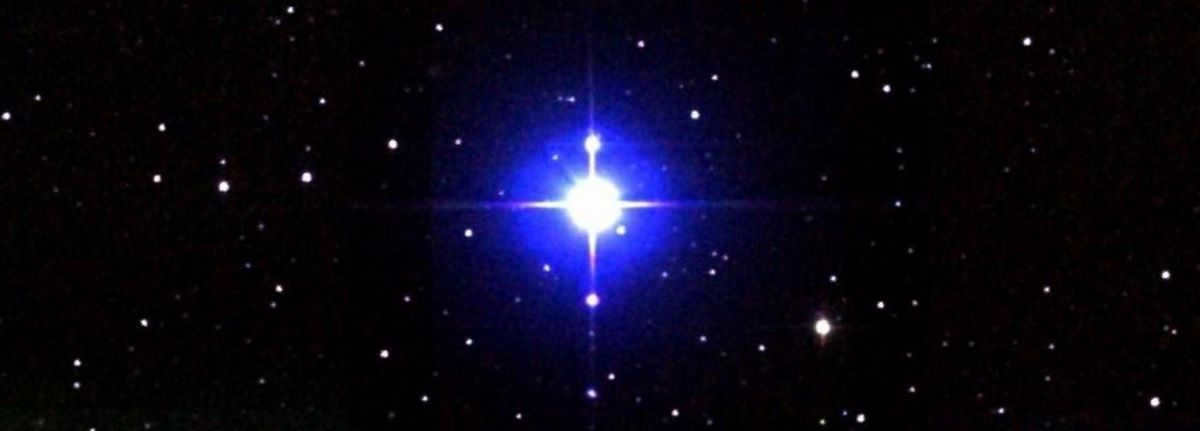
- According to Chinese folklore, Bellatrix was known as the fifth star in the Triple Star Constellation. This asterism originally consisted of the Orion Belt stars Alnilam, Alnitak, and Mintaka. Over time, more stars from Orion were included in the asterism.
- The indigenous Vardaman people of the Northern Territory in Australia referred to this star as Banjan, which represented the shimmering pigment used in ceremonies led by Unumburgu, also known as the Rigel star – the Leader of the Red Kangaroos.
The Eskimos had their own name for Bellatrix and Betelgeuse, calling them Akuttujuuk, which can be translated as “those (two) who are far apart”.
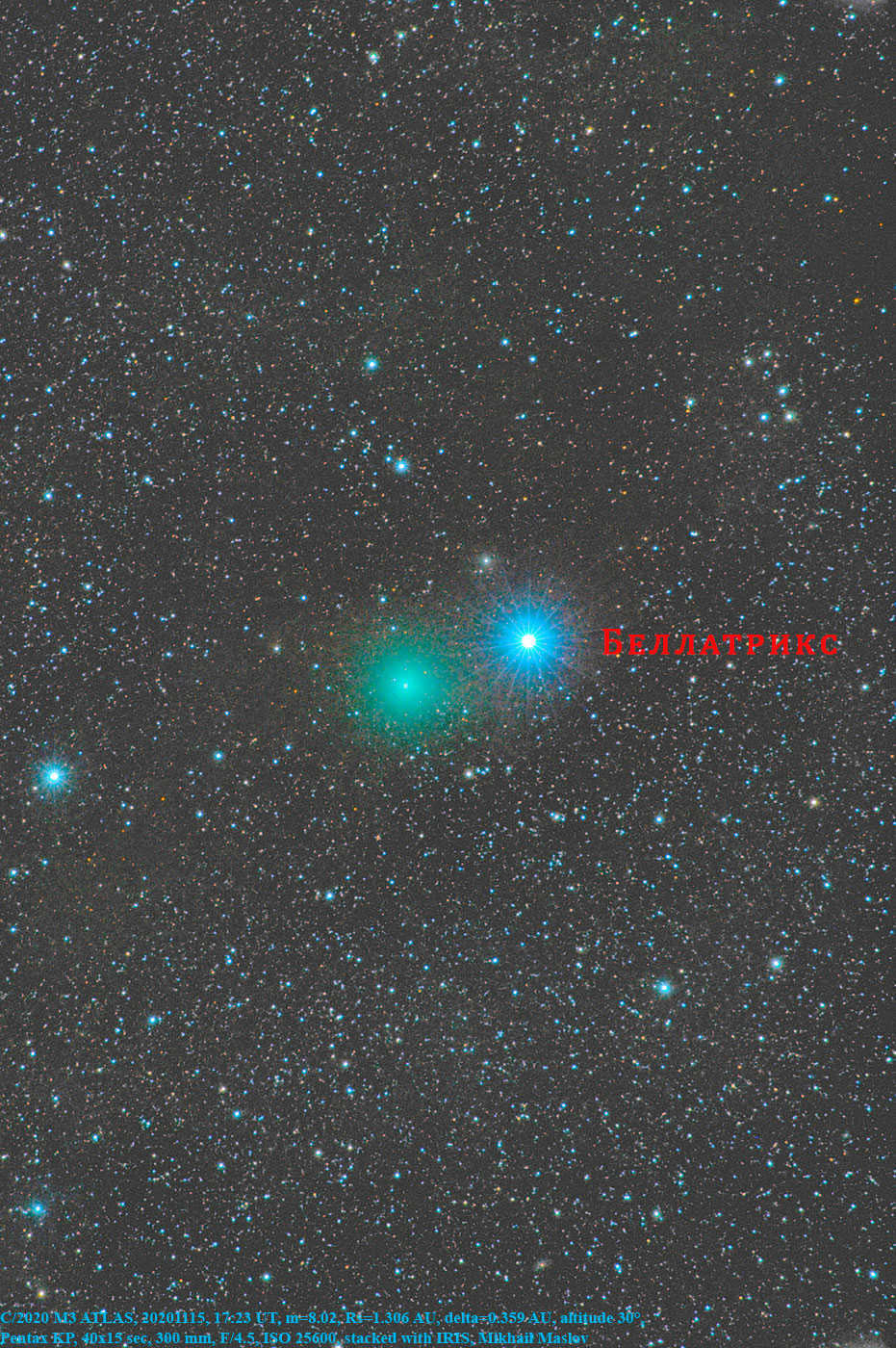
- Bellatrix is referenced in various works of fiction such as Planet of the Apes and the Harry Potter franchise, which features a female character named Bellatrix among its villains.
- Bellatrix is situated just 5 degrees west of the red supergiant Betelgeuse.
- The optimal time to observe Bellatrix and the other stars of Orion is during January when the constellation dominates the evening sky.
- Bellatrix, along with Betelgeuse and Meissa, also serves as a marker for the head of Orion. In ancient times, they were associated with the Euphrates constellation of the King – Kabbab Sar – and were believed to bring good fortune, wealth, and military honors.
- If Bellatrix were to replace our sun, everything on Earth would incinerate and life would cease to exist.
Bellatrix stands out from other celestial objects due to its unique combination of cold facts and magical meanings. If you ever get the chance to witness this star, make sure to take a moment to marvel at its beauty.
Frequently Asked Questions
The best months to spot Bellatrix in the night sky are during the winter season, specifically from January to March.
Located in the central part of the constellation, near the right shoulder of the mighty Orion, Bellatrix lies north of Orion’s Belt (composed of Alnitak, Alnilam, and Mintak) and west of Betelgeuse. Together, these stars form the upper base of the hourglass-shaped figure created by the majority of the constellation’s stars.
Bellatrix has been classified as a B2 spectral class star. This classification is attributed to Bellatrix’s incredibly high surface temperature, making it one of the hottest stars visible to the naked eye.
The metallicity of Bellatrix is less than that of the Sun: specifically, this star has an iron content equivalent to 56% of the Sun’s.
Bellatrix is situated approximately 240 ± 20 light years away from us.

